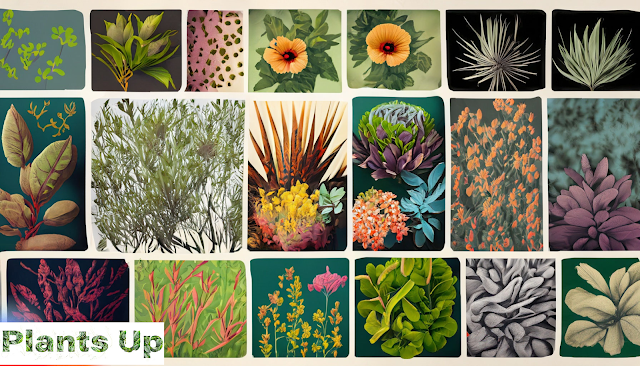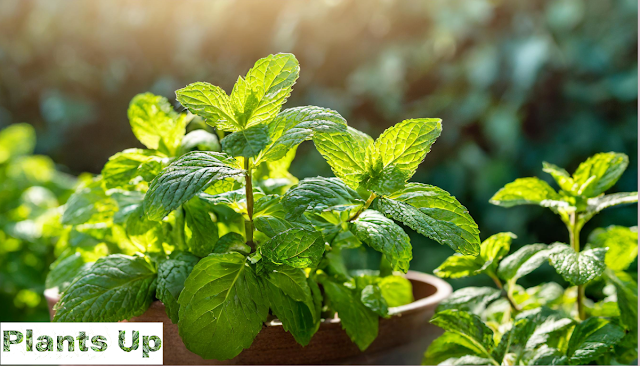 |
| The Power of Sustainable Plants |
In an era where environmental sustainability is crucial, one of the most impactful ways we can contribute is through our choices in plant cultivation. Sustainable plants not only beautify our surroundings but also play a vital role in conserving resources, promoting biodiversity, and reducing our carbon footprint. In this blog, we will explore the significance of sustainable plants and discover how they can transform our living spaces into eco-friendly havens.
I. Understanding Sustainable Plants
A. Definition and principles of sustainable plants:
Explaining how sustainable plants are those that are cultivated and maintained in a manner that minimizes environmental impact and promotes long-term ecological balance.
Discussing the principles of sustainable plant cultivation, such as conserving water, reducing chemical inputs, and supporting biodiversity.
B. Benefits of incorporating sustainable plants in our surroundings:
Highlighting how sustainable plants enhance ecosystem services by providing habitat for wildlife, improving air quality, and reducing soil erosion.
Emphasizing the positive impact of sustainable plants on biodiversity conservation and the preservation of native plant species.
C. The role of sustainable plants in promoting ecological balance:
Discussing how sustainable plants contribute to the overall health and resilience of ecosystems by attracting pollinators, supporting beneficial insects, and providing food and shelter for wildlife.
Exploring how sustainable plants can help restore degraded environments and mitigate the impacts of climate change.
II. Choosing Sustainable Plants for Your Garden:
A. Native and indigenous plant species:
Highlighting the importance of selecting plants that are native to the local region, as they are well-adapted to the climate and require minimal resources for their growth.
Providing examples of native plants that are suitable for different regions and highlighting their unique characteristics.
B. Drought-tolerant and low-water plants:
Discussing the significance of choosing plants that can thrive in arid or water-scarce conditions, reducing the need for excessive watering.
Suggesting a variety of drought-tolerant plants known for their resilience and ability to conserve water.
C. Pest-resistant and disease-resistant varieties:
Explaining the benefits of selecting plants that have natural resistance to pests and diseases, reducing the reliance on chemical pesticides.
Providing examples of pest-resistant and disease-resistant plant species and cultivars suitable for different gardening contexts.
D. Perennial and long-living plants:
Highlighting the advantages of incorporating perennial plants into the landscape, as they require less maintenance and offer long-term benefits.
Recommending perennial plant species known for their longevity and ability to provide year-round interest.
E. Edible and food-producing plants:
Discussing the benefits of growing edible plants in a sustainable garden, including access to fresh, nutritious food and reduced dependence on commercially grown produce.
Providing examples of food-producing plants that are well-suited for home gardens and container gardening.
III. Eco-Friendly Gardening Practices:
.png) |
| Community Gardening |
A. Organic and natural fertilizers:
Explaining the advantages of using organic and natural fertilizers, such as compost, manure, and plant-based materials, to improve soil fertility and structure without harmful chemicals.
Providing tips on how to make and apply organic fertilizers and discussing their long-term benefits for plant health and environmental sustainability.
B. Water conservation techniques:
Introducing various water-saving methods, such as drip irrigation, rainwater harvesting, and mulching, to minimize water usage in the garden.
Offering practical tips on how to implement these techniques effectively and highlighting their role in water conservation and sustainable gardening.
C. Companion planting and biodiversity enhancement:
Explaining the concept of companion planting, where certain plant combinations mutually benefit each other, such as deterring pests or improving nutrient uptake.
Discussing the importance of creating biodiversity in the garden by incorporating a variety of plant species, which supports a balanced ecosystem and reduces the risk of pest and disease outbreaks.
D. Mulching and soil conservation methods:
Describing the benefits of mulching in terms of moisture retention, weed suppression, and soil temperature regulation.
Discussing other soil conservation practices, such as contour planting, terracing, and erosion control, to maintain soil health and prevent soil degradation.
E. Integrated pest management (IPM) strategies:
Introducing the concept of IPM, which focuses on using a combination of preventive measures, cultural practices, and targeted treatments to manage pests and diseases.
Providing practical tips on implementing IPM strategies, such as regular monitoring, biological controls, and minimizing pesticide use.
IV. Sustainable Indoor Plants:
A. Air-purifying plants for better indoor air quality:
Discussing the importance of indoor air quality and how certain plants can effectively remove pollutants and improve the overall air quality in homes and offices.
Highlighting popular air-purifying plants and their specific benefits in creating a healthier indoor environment.
B. Low-maintenance plants that require minimal resources:
Introducing low-maintenance indoor plants that can thrive with minimal care, reducing the need for excessive watering, pruning, or special lighting conditions.
Providing examples of such plants and offering tips on how to care for them effectively.
C. Plants that thrive in indoor conditions without the need for excessive lighting or watering:
Discussing indoor plant species that can adapt well to low-light conditions or can tolerate periods of drought, making them suitable for indoor environments with limited natural light or for individuals with busy lifestyles.
Sharing recommendations on how to select and care for these plants to ensure their long-term sustainability indoors.
V. Benefits of Sustainable Plants:
A. Environmental benefits, such as carbon sequestration and habitat creation:
Explaining how sustainable plants contribute to mitigating climate change by absorbing carbon dioxide and storing carbon in their biomass and soil.
Discussing how sustainable plants provide valuable habitat and food sources for wildlife, supporting local biodiversity.
B. Health benefits, including improved air quality and stress reduction:
Highlighting the positive effects of plants on human health, such as purifying indoor air, reducing toxins, and promoting a sense of well-being and relaxation.
Sharing scientific studies and evidence that support the positive impact of plants on mental and physical health.
C. Economic benefits, such as reduced water and energy consumption:
Exploring how sustainable gardening practices, such as water conservation and energy-efficient landscaping, can lead to significant cost savings over time.
Discussing how sustainable plant choices and gardening methods can contribute to resource efficiency and long-term financial benefits.
D. Social benefits, fostering a connection to nature and promoting well-being:
Emphasizing the role of sustainable plants in creating a closer connection to nature, improving mental health, and promoting a sense of community and well-being.
Sharing stories and experiences of individuals or communities who have benefited socially from sustainable plant practices.
VI. Promoting Sustainability Beyond Your Garden:
.png) |
| Sustainable Indoor Plants: |
A. Encouraging community gardening initiatives:
Discussing the importance of community gardening projects in promoting sustainable practices, fostering social connections, and sharing resources and knowledge.
Providing guidance on how individuals can get involved in community gardening initiatives and contribute to a more sustainable society.
B. Supporting local nurseries and sustainable plant suppliers:
Highlighting the significance of purchasing plants from local nurseries and suppliers that prioritize sustainable and environmentally friendly practices.
Encouraging readers to research and support businesses that share their values and commitment to sustainable plant cultivation.
C. Spreading awareness through education and outreach programs:
Discussing the role of education and outreach in raising awareness about sustainable plants and gardening practices.
Encouraging readers to participate in or organize workshops, seminars, or community events to share knowledge and inspire others to embrace sustainable gardening.
D. Advocating for sustainable landscaping practices in public spaces:
Highlighting the impact of landscaping choices in public areas, such as parks, schools, and commercial spaces, on the environment and community well-being.
Encouraging readers to engage with local authorities and organizations to promote sustainable landscaping practices and influence positive change in their communities.
Conclusion:
By embracing sustainable plants in our gardens and indoor spaces, we have the power to make a positive impact on the environment and our own well-being. From conserving resources and supporting biodiversity to creating healthier living environments, sustainable plants are an essential component of a more sustainable future. Let us join hands and cultivate a greener world, one plant at a time.
Remember, it is not just about the plants we choose, but also the practices we adopt. By incorporating eco-friendly gardening techniques and promoting sustainable principles, we can truly make a difference. Start your journey towards a more sustainable lifestyle today!
